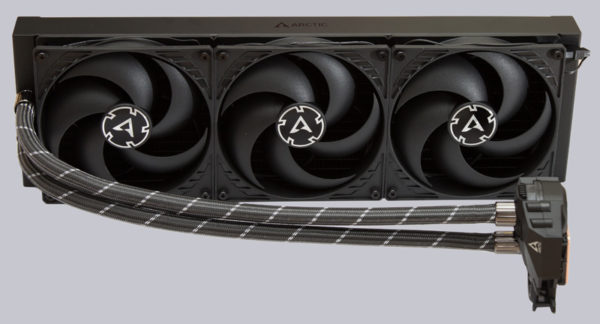
Layout, design and features …
Apart from the size of the unit, there are no differences to the Liquid Freezer II 360 from the second revision.
Let us first have a look at the cooling block of the Liquid Freezer II 420 in detail. Dimensions and shape of the heat sink remained untouched. On the outside, it carries the Arctic logo and on the front, the transparent but still unlit VRM fan, which is adjustable between 1000 and 3000 rpm. The speed control is done by a single PWM fan connector, which supplies the pump, radiator fan and VRM fan together.
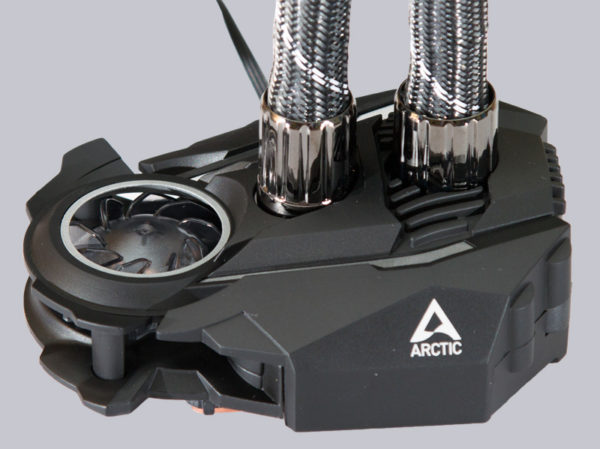
As we found out during our test, the whole system needs a maximum of 0.74A at 12V. So a usual 1A fan connector on the motherboard should have more than enough reserves to supply the 420mm AIO. Unfortunately neither the pump nor the VRM fan provide a speed signal. Only the fans give the mainboard information about the operating status.
On the bottom side the easily scratchable cold plate made of copper is protected with a residue-free removable sticker, which has to be removed before mounting.
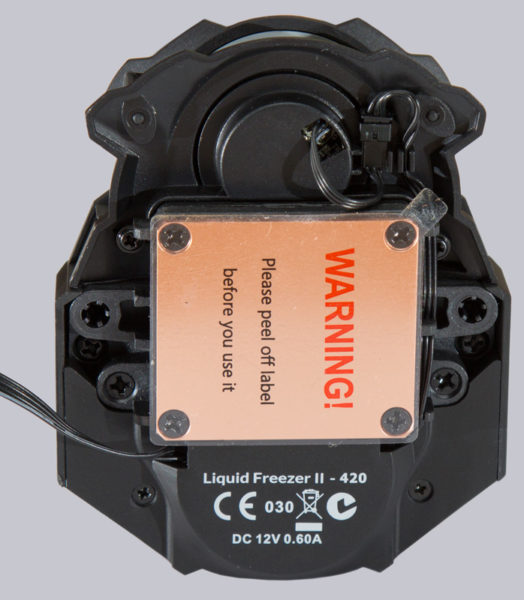
As usual from Arctic, a flawless cooling plate appears after removing the protective film.
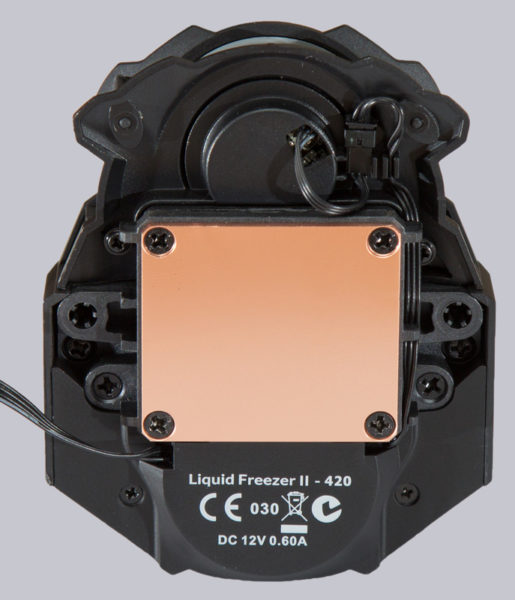
When viewed from the front, you can easily see the slot through which the airflow of the VRM fan exits the case radially towards the mainboard voltage converter. The discreet airflow can be a decisive advantage under particularly adverse environmental conditions.
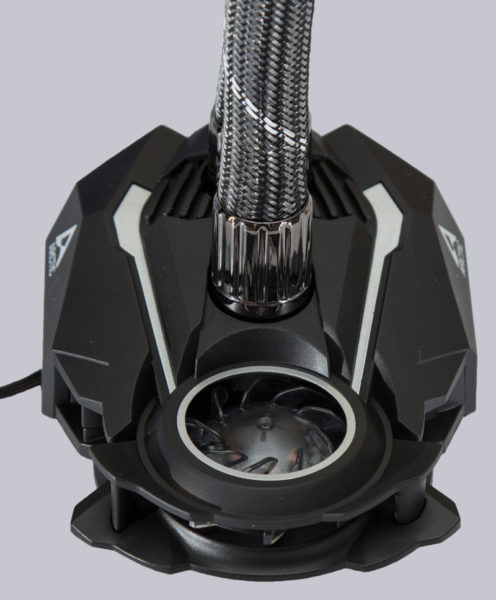
The 420mm radiator has simply been extended compared to the 280mm version. The aluminium construction includes 14 cooling pipes. The cooling fins are evenly arranged and have no dents. On the long sides of the cooler, the Arctic logo is applied on the outside, which can be seen when the radiator is mounted in the PC case roof and a side window is present.
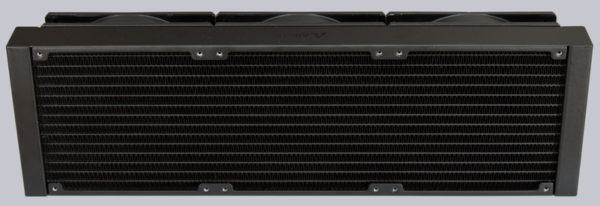
However, the construct, which weighs a total of approx. 2 kilograms, requires some space in the PC case. For example, the Cooler Master C700P Black Edition, which we tested, easily accommodates the large radiator either in the front or in the roof.
Arctic connects all fans and the pump with a single cable ex works, so that on the one hand you only have to connect one single cable to the mainboard and on the other hand there is no cable tangle. The highlight of this type of design is that Arctic runs the connecting cable between the radiator fans and the pump inside the hose sheathing, which gives the AIO a particularly clean look. If you want to control the fans and the pump independently, you only have to unplug the connectors and plug the pump and fan into separate connections on the mainboard or fan controller. However, it would be a little better if Arctic would design the fans like the in-house PST fans. Then independent cabling would be even easier and the long connection cable next to the radi would be omitted if you want to control the fans independently.
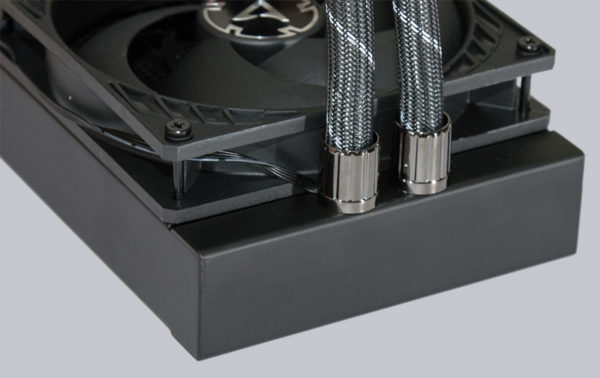
For the fans you can get Arctic’s proven P-Series fans, which are also sold separately. The included P14 PWM fans have 5 strongly curved fan blades, which create enough pressure to force the air through the 38mm thick radiator. They are designed for extra quiet operation. We can confirm this characteristic unconditionally, even if there are no rubber inserts at the fixing points. They are among the quietest fans on the market. Arctic achieves this thanks to the hydrodynamic bearing and the specially developed motor, which has been designed to run particularly quietly. For the concealed cable routing, however, the fans have been given extra short connecting cables, so that in the case of individual fan control, adapter cables are definitely required for extension.
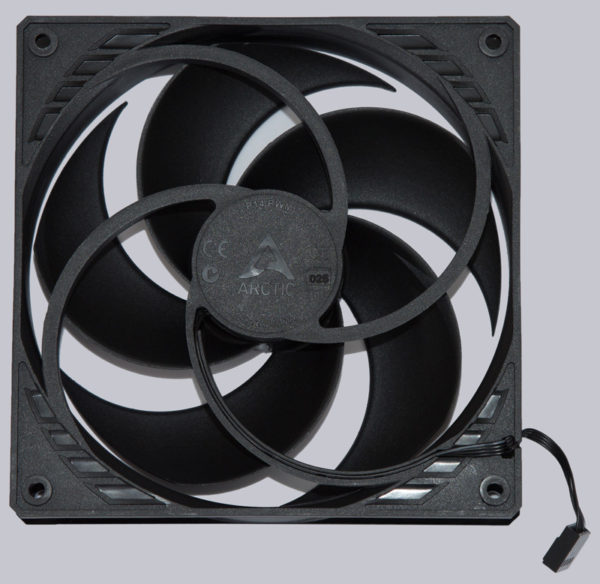
The fixing screws for the fans are known from revision 2. If the screws from revision 1 still had the thread over the whole shaft length, the thread portion of the new screws is reduced to a minimum. So there is no longer the danger of overtightening the fan and bending the corners of the fan frame. With the original version, feeling was required here, but now you can tighten the screws without hesitation until the end of the thread is reached.
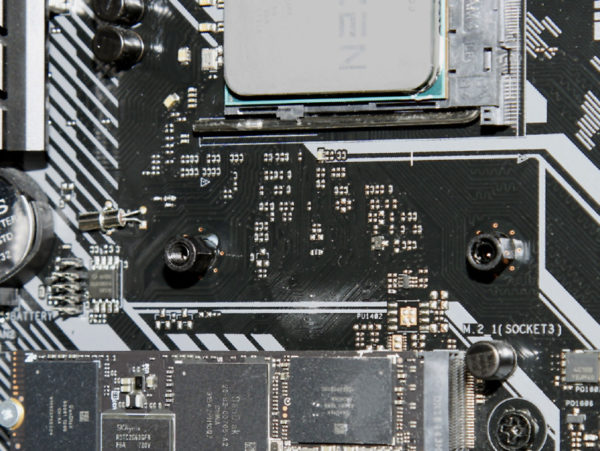
Now we come to the installation of the Arctic CPU water cooler.
Arctic Liquid Freezer II 420 Installation …


